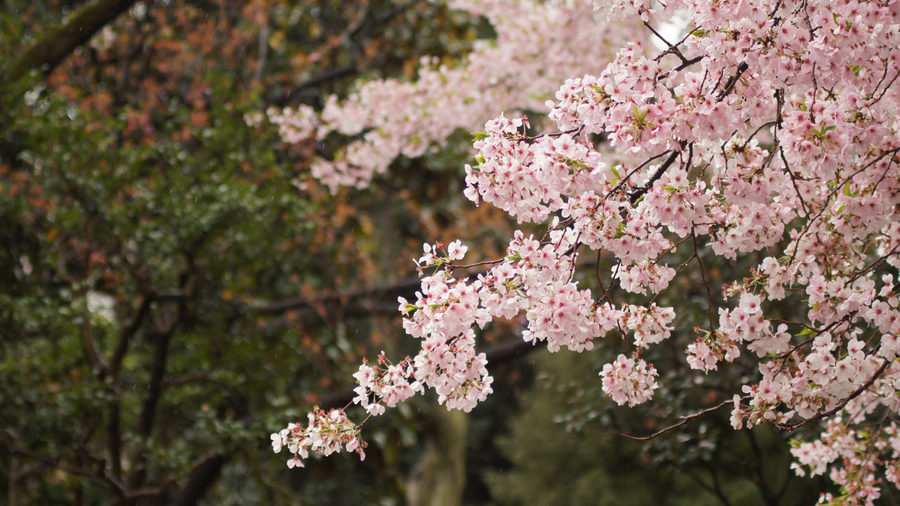· 5 min read
Spring Time in Japan: The Beauty of 春 (はる)
Spring time is a very popular time in Japan.

As the chilly winter months come to an end, Japan comes alive with the blossoming of cherry blossoms and the vibrant hues of spring. The Japanese word for spring is 春 (はる), which captures the essence of this beautiful season.
The Kanji: 春 (はる)
The Kanji for spring, 春, is made up of two parts:
- 日 (にち) – This character represents the sun and is often used to indicate the concept of day or daylight.
- 屯 (とん) – This character represents a group or gathering, and by itself, it doesn’t hold a particular meaning related to spring.
When combined, these two characters create the Kanji for spring, symbolizing the sun shining down on a gathering of new life, which is a fitting description for this season of renewal.
Japanese Season Words
In Japan, there are numerous words used to describe the different aspects of each season. Some season words (or “kigo” in Japanese) related to spring include:
- 桜 (さくら) – Cherry blossoms, the iconic symbol of spring in Japan.
- 花見 (はなみ) – Hanami, the traditional custom of enjoying the transient beauty of flowers, especially cherry blossoms.
- 菜の花 (なのはな) – Rapeseed flowers, which bloom in vibrant yellow during springtime.
- 春雨 (はるさめ) – Spring rain, the gentle showers that bring life to the plants and flowers.
- 新緑 (しんりょく) – New greenery, the fresh, bright green leaves that appear on trees during this season.
Common Themes in Japan During Spring
Spring in Japan is a time of renewal and celebration, with several themes and customs that embody the spirit of the season. Some of the most common themes include:
Cherry Blossoms and Hanami
Cherry blossoms, or 桜 (さくら), are the quintessential symbol of spring in Japan. The delicate pink and white blossoms attract people from all over the world who come to experience their beauty. Hanami (花見), the traditional custom of flower viewing, usually involves gathering with friends and family under the blossoming cherry trees for picnics and celebrations.
Graduations and New Beginnings
In Japan, the school year ends in March and begins in April, aligning with the arrival of spring. Graduation ceremonies take place during this time, and new students embark on their educational journeys. The season is symbolic of new beginnings and fresh starts, both in academic and professional settings.
Seasonal Cuisine
Springtime in Japan brings a variety of fresh, seasonal ingredients to the table. Some popular spring foods include takenoko (bamboo shoots), warabi (bracken ferns), and sakura mochi (a pink, cherry blossom-flavored rice cake wrapped in a pickled cherry leaf).
Festivals and Events
Several festivals and events take place during the spring months, including the Hina Matsuri (Doll Festival) on March 3rd, and the Kodomo no Hi (Children’s Day) on May 5th. These festivals celebrate family, happiness, and hope for a successful future.
A Conversation on Sakura Viewing in Tokyo
Traveler: すみません、東京で桜の木を見るのに良い場所を知っていますか?
(Sumimasen, Tōkyō de sakura no ki o miru noni yoi basho o shitte imasu ka?)
Excuse me, do you know any great places to see the sakura trees in Tokyo?
Japanese Person: もちろん!上野公園がとても人気があります。桜のシーズン中は混雑していますが、ぜひ訪れる価値があります。もう一つのおすすめは新宿御苑で、1000本以上の桜の木があり、落ち着いた雰囲気が楽しめます。
(Mochiron! Ueno Kōen ga totemo ninki ga arimasu. Sakura no shīzun-chū wa konzatsu shiteimasu ga, zehi otozureru kachi ga arimasu. Mō hitotsu no osusume wa Shinjuku Gyoen de, senbon ijō no sakura no ki ga ari, ochitsuita fun’iki ga tanoshimemasu.)
Of course! One of the most popular spots is Ueno Park. It’s quite crowded during the sakura season, but it’s definitely worth visiting. Another great location is Shinjuku Gyoen, which has over 1,000 cherry trees and a more serene atmosphere.
Traveler: 上野公園に行くにはどうすればいいですか?
(Ueno Kōen ni iku ni wa dō sureba ii desu ka?)
How do I get to Ueno Park?
Japanese Person: 電車で簡単に行けます。JR山手線で上野駅に行ってください。そこから徒歩で公園まで行けます。
(Densha de kantan ni ikemasu. JR Yamanote-sen de Ueno-eki ni itte kudasai. Soko kara toho de kōen made ikemasu.)
It’s very easy to reach by train. Just take the JR Yamanote Line to Ueno Station. From there, you can walk to the park.